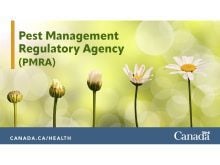REGINA – The number of people seeking help for problem gambling is increasing, a Saskatchewan Health official said last week.
Bob Markosky, who heads the province’s problem gambling program, told a gaming conference the numbers almost doubled in the first six months of the 1995-96 year, which began April 1.
In 1994-95 there were 206 clients in treatment in the province. By Sept. 1, 1995 there were 189.
“As gaming opportunities increase, it’s likely that the number of people with problems will increase too,” he said.
The numbers are also going up in Manitoba. Last year there were 555 clients and in the first six months of this year there were 448. Alberta had 440 clients last year, but figures for this year were unavailable.
Read Also

Europe holds promise for Canadian lentils
Pulse Canada is trying to help boost lentil consumption in Europe, which is already the fourth largest market.
Markosky said the typical problem gambler is male, with a high school education or less and working at a blue-collar job.
First-year data compiled by the province indicates 61 percent of problem gamblers earned less than $30,000 per year and 39 percent of these have an income of less than $20,000.
Seventeen percent were unemployed, 13 percent worked part time and 50 percent worked full time. Seventy percent had a problem with video lottery terminals.
“People gamble to win money,” Markosky said. “Why is it so bewildering to understand why poor people would want to escape by winning money?”
Markosky said figures for Manitoba are similar. Provincial budgets for treating problem gambling vary widely per capita, he said.
Alberta spends $1.1 million, or 54 cents per person aged 18 or over. Manitoba spends $1 million, or $1.15 per person, and Sask-atchewan spends $1.5 million or $2.04 per person.
Ontario spends $1 million, or 15 cents per capita, but Clare Lewis of the Ontario Gaming Control Commission said the new provincial government’s policy is unclear and “there is the suggestion that monies dedicated to treatment may be threatened.”
Bob Sims of the Saskatoon Crisis Intervention Service said the province’s toll-free help line, which was hooked up in May 1994, handled 2,147 calls as of Sept. 30, 1995.
He said 60 percent of the callers were male and the same percentage came from people who said they have or thought they had a problem.
Sims said he was alarmed by the speed at which the problems developed. While alcoholism can take years to be acknowledged, problem gamblers are seeking help after just three to four months.















